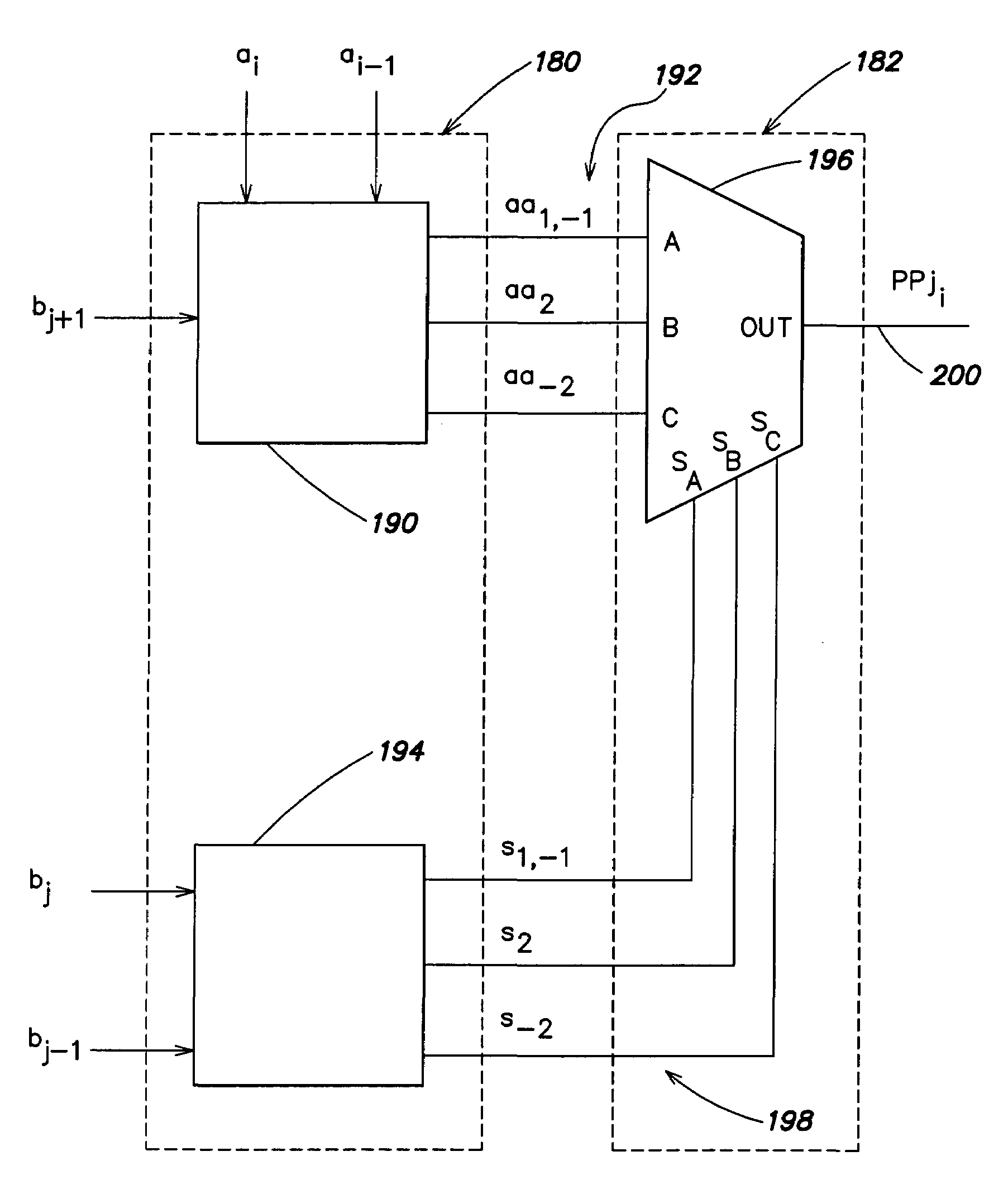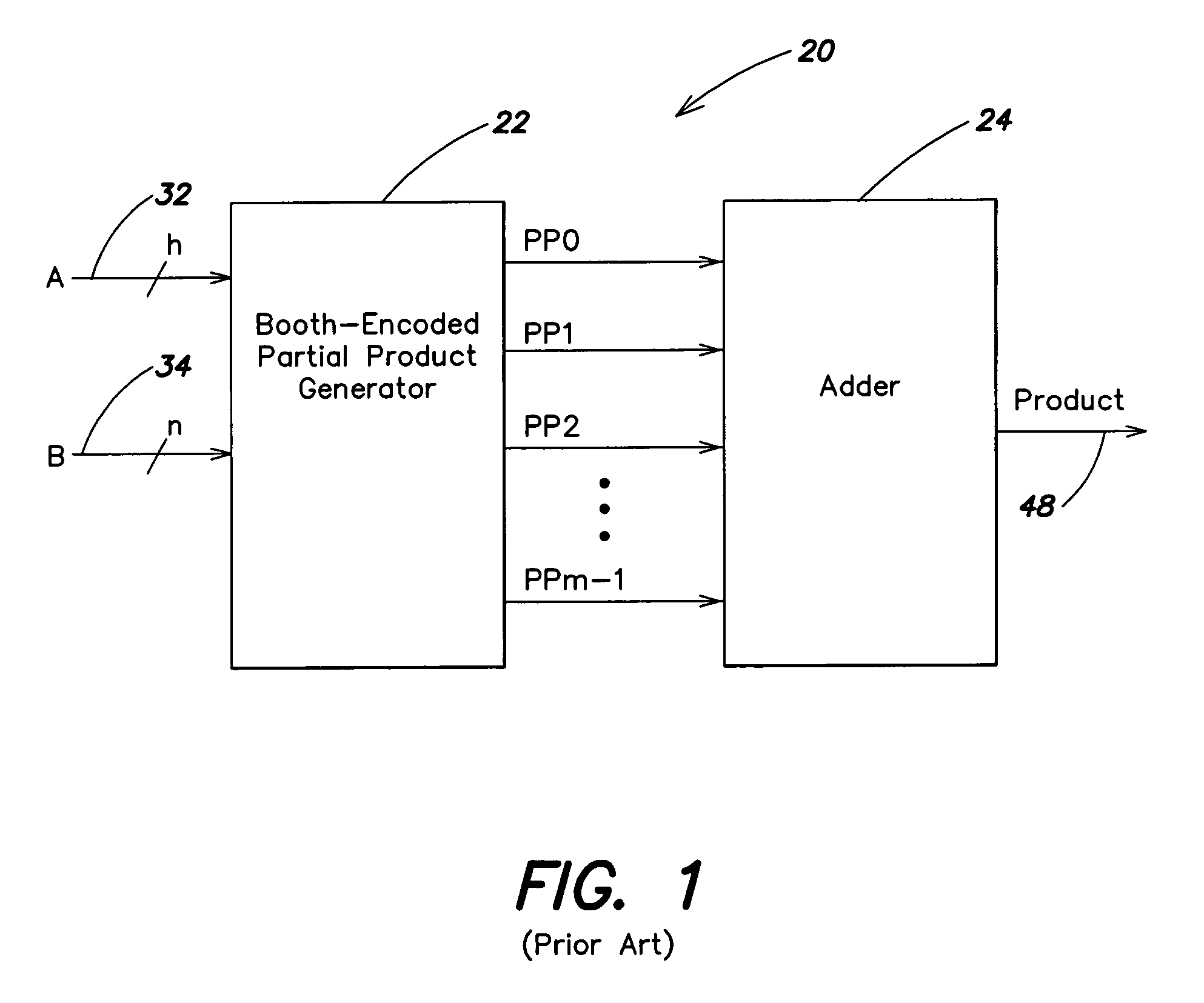Method and apparatus for use in booth-encoded multiplication
a multiplication and booth-encoding technology, applied in the field of data processors, can solve problems such as combinatorial logic, and achieve the effects of reducing propagation delay, power and/or area, and increasing the speed of a multiplier
- Summary
- Abstract
- Description
- Claims
- Application Information
AI Technical Summary
Benefits of technology
Problems solved by technology
Method used
Image
Examples
Embodiment Construction
[0063]FIG. 6 shows a representation of a new booth-encoded partial product bit generator 170 according to one embodiment of the present invention.
[0064]As with the partial product bit generators 70A–70D (FIGS. 3–5), the partial product generator 170 has two sets of inputs and one output. The first set of inputs is indicated by ai, ai-1. The second set of inputs is indicated by bj+1, bj, bj−1. The output is indicated by PPji. The ai, ai-1 inputs are intended to receive a group of bits of a multiplicand. The bj+1, bj, bj−1 inputs are intended to receive a group of bits of a multiplier. The PPji output provides a bit of a partial product.
[0065]It should be appreciated, in view of the discussion hereinbelow, that for a given set of inputs, the output of the partial product bit generator 170 is substantially equivalent to that which would be produced by the partial product bit generators 70A–70D (FIGS. 3–5).
[0066]FIGS. 7A and 7B show logic equations and a truth table, respectively, for o...
PUM
 Login to View More
Login to View More Abstract
Description
Claims
Application Information
 Login to View More
Login to View More - R&D
- Intellectual Property
- Life Sciences
- Materials
- Tech Scout
- Unparalleled Data Quality
- Higher Quality Content
- 60% Fewer Hallucinations
Browse by: Latest US Patents, China's latest patents, Technical Efficacy Thesaurus, Application Domain, Technology Topic, Popular Technical Reports.
© 2025 PatSnap. All rights reserved.Legal|Privacy policy|Modern Slavery Act Transparency Statement|Sitemap|About US| Contact US: help@patsnap.com



